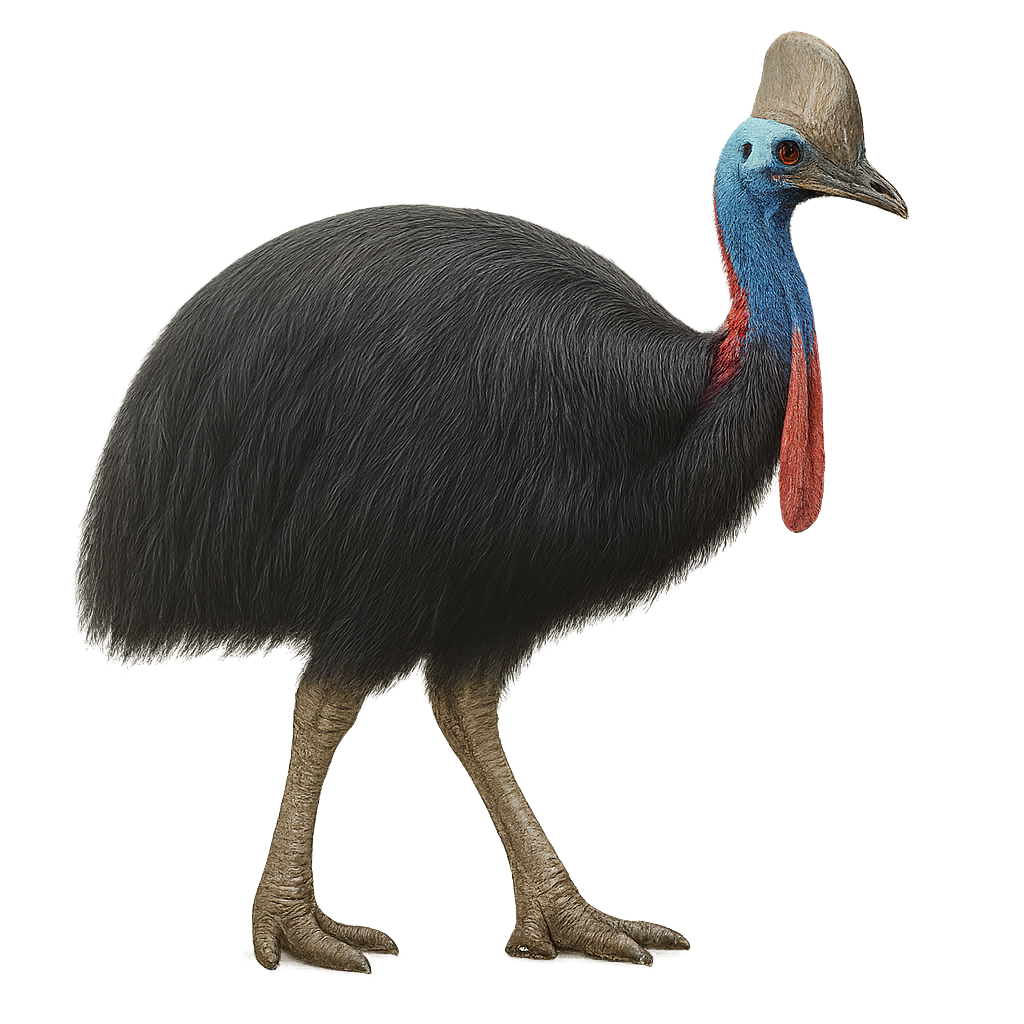Your wildlife photography guide.
Explore the southern cassowary in detail, study its behavior, prepare your shots.
Where to observe and photograph the southern cassowary in the wild
Learn where and when to spot the southern cassowary in the wild, how to identify the species based on distinctive features, and what natural environments it inhabits. The WildlifePhotographer app offers tailored photography tips that reflect the southern cassowary’s behavior, helping you capture better wildlife images. Explore the full species profile for key information including description, habitat, active periods, and approach techniques.
Southern Cassowary
Scientific name: Casuarius casuarius

IUCN Status: Vulnerable
Family: CASUARIIDAE
Group: Birds
Sensitivity to human approach: Shy
Minimum approach distance: 10 m
Courtship display: June to August
Incubation: 47-61 jours
Hatchings: July to October
Habitat:
Tropical forests, mangroves, swamps
Activity period :
Primarily active during the day, with peak activity in the morning and late afternoon.
Identification and description:
The Southern Cassowary, Casuarius casuarius, is a large and fascinating bird native to the tropical forests of New Guinea, Australia, and surrounding islands. It is distinguished by its glossy black plumage, striking blue head, and unique horned casque. This casque, which can reach 18 cm in height, is used to navigate through dense vegetation. Cassowaries are solitary and territorial birds, known for their shy behavior. They primarily feed on fallen fruits but can also consume small animals and fungi. Their ecological role is crucial as they disperse seeds of many plant species. Although capable of running at high speeds and swimming, they are threatened by habitat loss and vehicle collisions.
Recommended lens:
400 mm – adjust based on distance, desired framing (portrait or habitat), and approach conditions.
Photography tips:
When photographing the Southern Cassowary, it's essential to maintain a safe distance of at least 10 meters to avoid disturbing it. Use a telephoto lens of 400 mm or more to capture detailed images without getting too close. The tropical forests where it lives often provide dim lighting, so adjust your exposure settings accordingly. Be patient and discreet, as these birds are very shy. Opt for early morning hours to benefit from better lighting and increased bird activity.
The WildlifePhotographer App is coming soon!
Be the first to explore the best nature spots, track rutting seasons, log your observations, and observe more wildlife.
Already 1 429 wildlife lovers subscribed worldwide

